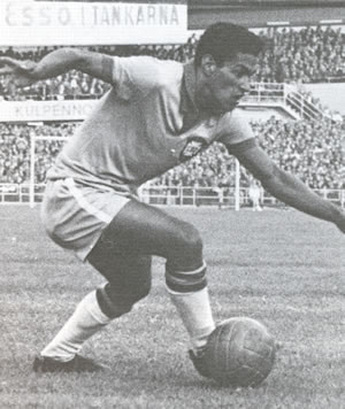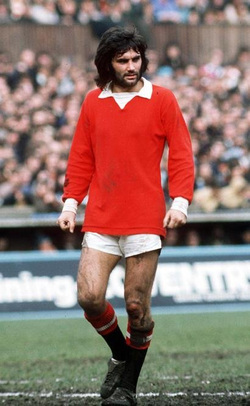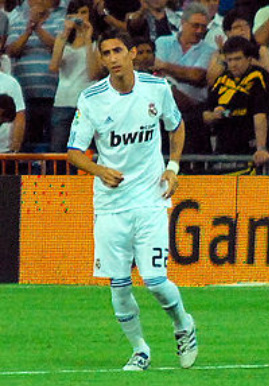|
|
|
The Greatest Right Wingers (or Right Forwards / Wide Midfielders) of All Time
Shirt number: 7
The role of the winger, or wide midfielder, has changed considerably over the years. Originally the job was well-defined, and crucial to the team's creativity: stay close to the touchline, dribble past the full-back and float in a cross for the centre-forward (as exemplified by Sir Stanley Matthews). The greatest wingers have always scored a healthy amount of goals too, sometimes a staggering amount given their position. The heyday of the traditional winger lasted until the 1960s. After that Alf Ramsey's 4-4-2 and the Italian catenaccio defence changed everything. The winger was either removed all together - leaving the midfield narrow and relying on full-backs for width; or they were replaced with 'wide midfielders' - players who had to tuck in and help in midfield as well as getting forward and wide with the ball when in possession, often using pace and one-to-ones rather than dribbling to get past players, and putting crosses in when they had chance (for example this was the style of David Beckham). The 4-3-3 system, popular in the 1970s, had either only one winger in a lop-sided formation (i.e. Garrincha for Brazil in 1962 or Overmars for Arsenal in 1996/97) or two wingers who also had to take it in turns to come inside to support a lone striker when the opposite winger stayed wide. Now, with the modern variation of 4-3-3 the winger also has to drop back when needed to help the midfield (as used by Mourinho's Chelsea). Coaches will often choose to play a great goalscoring winger as a central striker in order to maximise their contribution, although this is not their natural position and can sometimes restrict their game (a case in point with Cristiano Ronaldo).
With the newly popular 4-2-3-1 though the traditional winger is making something of a return. Able to stay forward, these players are definitely forwards rather than midfielders and are often not required to track back (for example Ronaldinho, Neymar or Ronaldo). However, these new wingers are now more likely to cut inside and make runs into the box rather than hugging the touchline to put crosses in; the crossing job is often left for the full-back, leaving the new 'winger' to get in the box and score. These new wingers are often played on their 'wrong' sides (i.e. right footed players on the left and vice versa) to reflect this new role (i.e. as in 2009/10 by Mancini at Manchester City or van Gaal at Bayern Munich with Robben and Ribery). These new types of players (we are have classified them as 'Wingers' here but many call them strikers, e.g. Ronaldo) are becoming important again in the game and scoring many goals themselves in addition to setting up chances for others, and this can be seen by the goal tallies of players like Cristiano Ronaldo and Lionel Messi (who began as a right winger before being moved to a more central position). Throughout all these changes wingers have been probably the most exciting players on the pitch, doing what they do best: moving the ball at pace and using their skill to dribble past opponents and creating goal-scoring chances.

Garrincha
Meredith Wales 1895-1915
Peucelle Arg 1930s
Liddell Sco 1940s/50s
Matthews Eng 1950-54
Julinho Bra 1950s
Rahn Ger 1950s
Basora Spa 1950s
Garrincha Bra 1958-66
Hamrin Swe 1958-69
Chislenko USSR 1960s
Peucelle Arg 1930s
Liddell Sco 1940s/50s
Matthews Eng 1950-54
Julinho Bra 1950s
Rahn Ger 1950s
Basora Spa 1950s
Garrincha Bra 1958-66
Hamrin Swe 1958-69
Chislenko USSR 1960s

Best
Jose Augusto Por 1960s
Bene Hun 1960s
Amancio Spa 1962-74
Best NI 1963-73
Johnstone Sco 1964-75
Jairzinho Bra 1970s
Lato Pol 1970s
Boniek Pol 1970s
Conti Ita 1980-86
B. Laudrup Den 1987-98
Bene Hun 1960s
Amancio Spa 1962-74
Best NI 1963-73
Johnstone Sco 1964-75
Jairzinho Bra 1970s
Lato Pol 1970s
Boniek Pol 1970s
Conti Ita 1980-86
B. Laudrup Den 1987-98
 Angel Di Maria
Overmars Neths 1990s
R. de Boer Neths 1990s Ortega Arg 1990/00s Figo Por 1990s/00s Beckham Eng 1998-2009 Ljungberg Swe 2000s Robinho Bra 2000s/10s Ribery Fra 2000s/10s Cristiano Ronaldo Por 2000s/10s |
|
|
To explore, use the tabs on the header or click on the links below:
Alltime Legends Best Players in Each Position Best Ever National Teams Best Ever Club Teams Dream Teams Visit our Shop |
